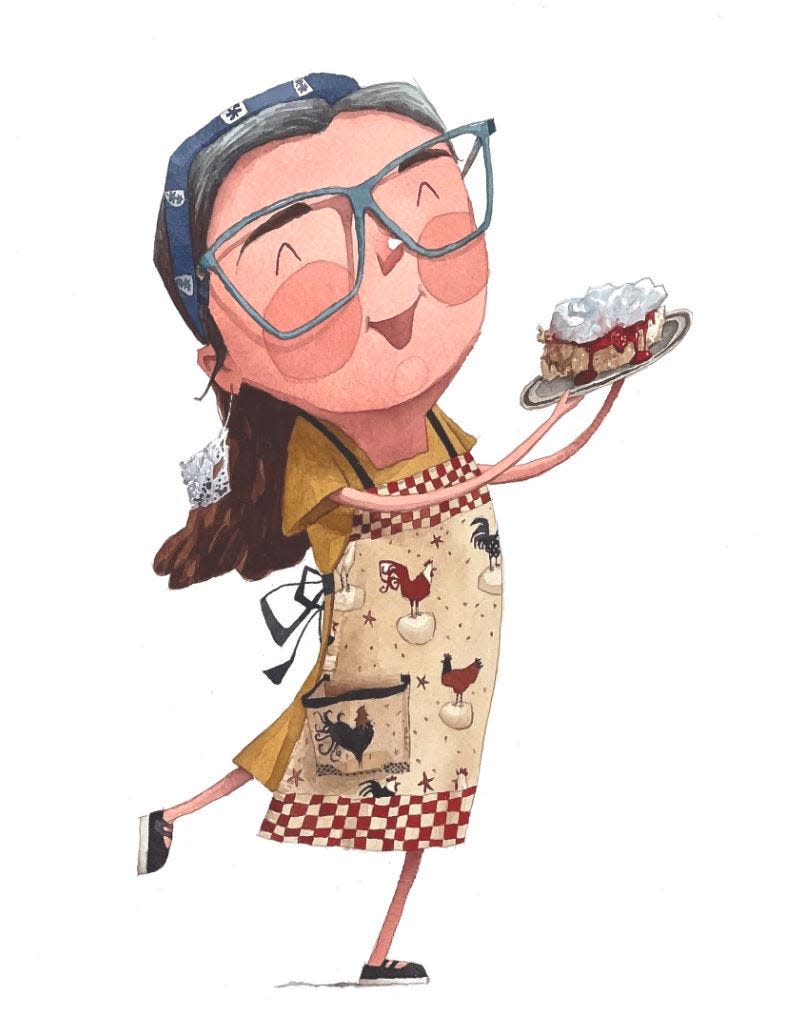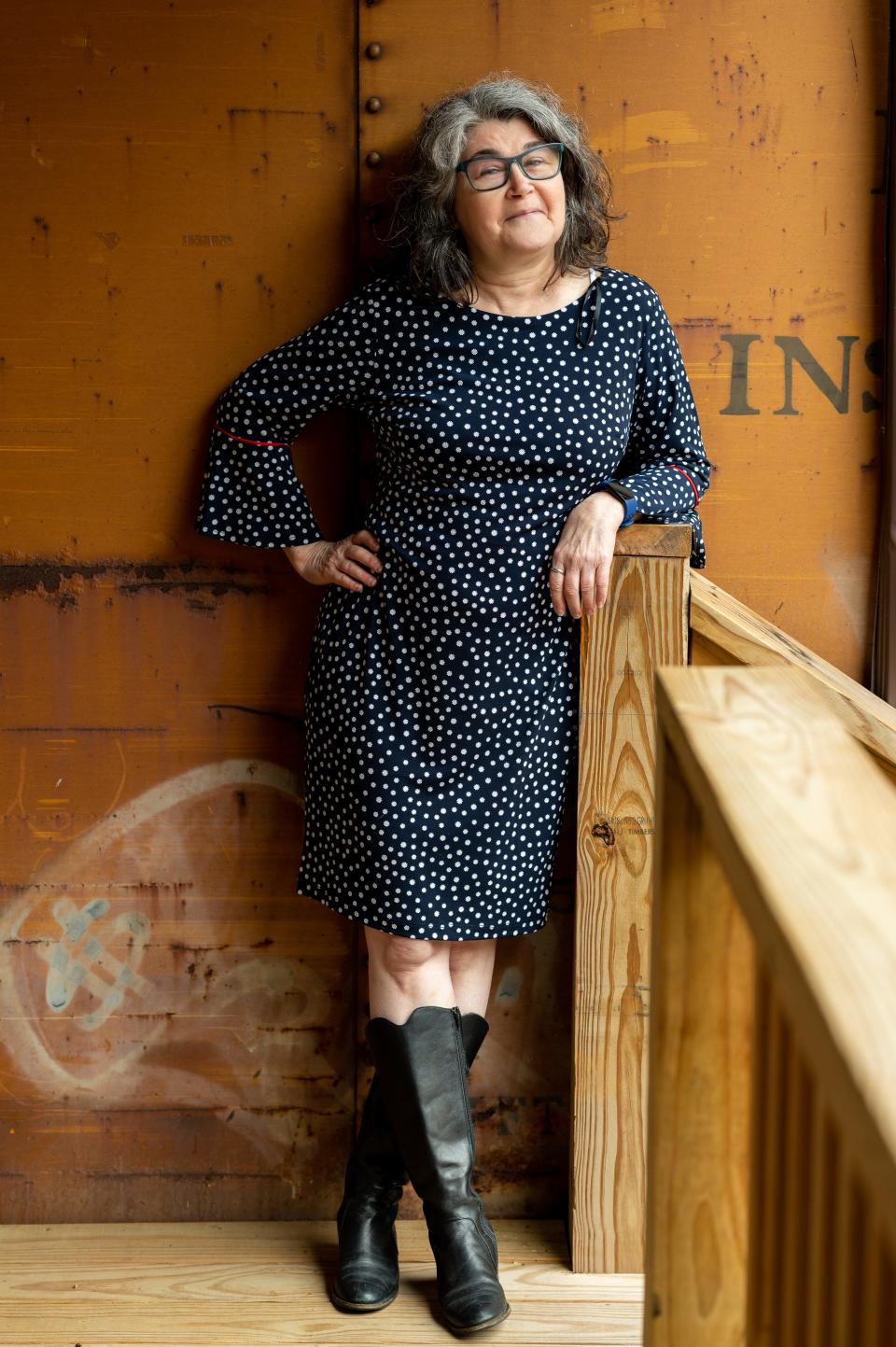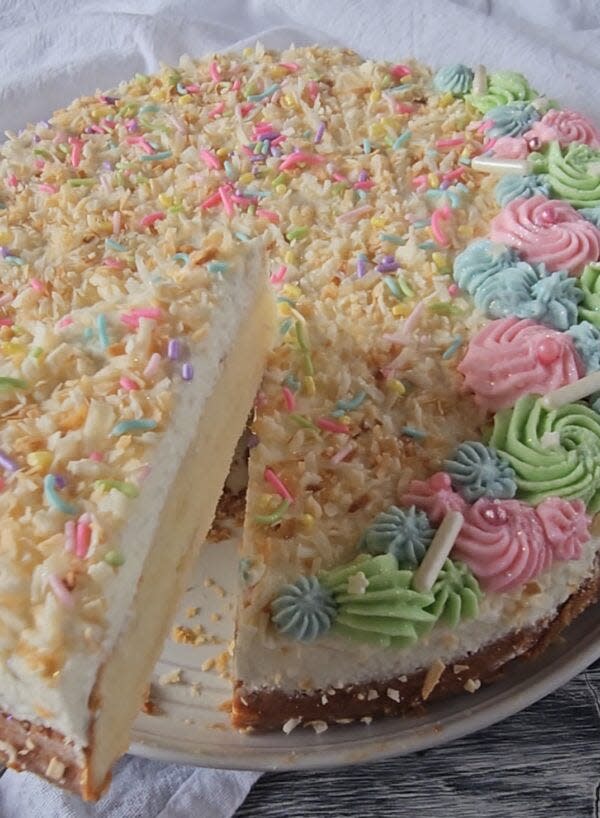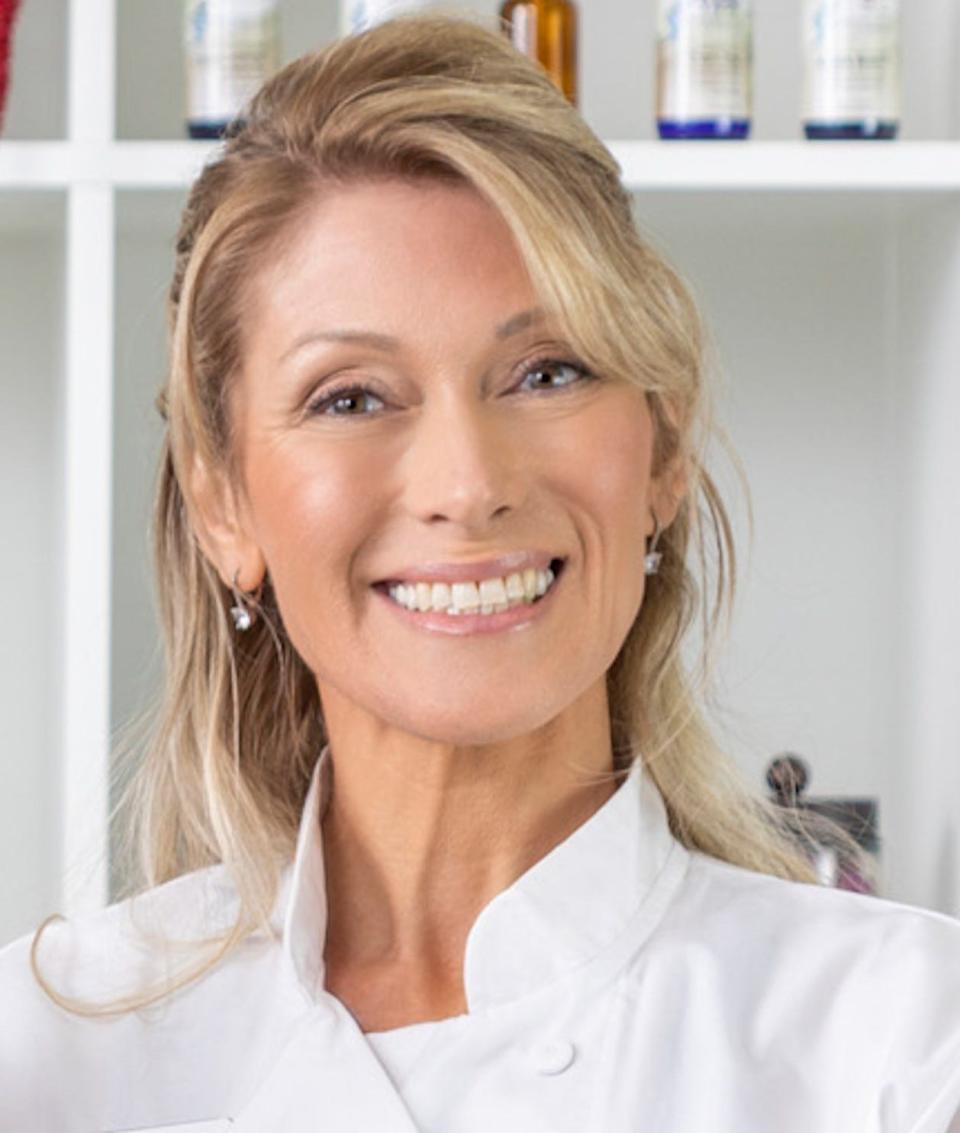Gluten-free living: The journey from feeling awful to feeling normal
May is Celiac Disease Awareness month, and I wanted to share a column I’d written when working in Rhode Island for the Independent, detailing my journey to diagnosis. (Reprinted with permission of IndependentRI.com)
Hi. My name is Karen, and I am a…
Many times in our lives, we have been categorized – put into little boxes based on circumstances in our lives. We are identified by conditions or situations, whether it be our occupation, an illness like alcoholism or drug abuse, an abusive relationship, a physical or emotional handicap – we are labeled.
I remember being sick for most of my life. As a child, I had what my Grandma Governo referred to as my “sick headaches,” which I would in later years recognize as migraines. I didn’t eat that much, because I felt awful when I ate. When I was 27, I weighed only 84 pounds.
I knew something was wrong. I had seen doctors, told them my laundry list of symptoms: bone-weary exhaustion, migraines, intestinal cramping, diarrhea, bloating, mental fog – and those were just the highlights. My general practitioner recommended that I see a gastroenterologist, who diagnosed me with colitis. He wrote me a prescription for an anti-spasmodic for my colon, and put me on a daily dose of fiber. I continued on this regimen for 15 years, and it did nothing to alleviate my symptoms. My health continued to decline.

You don’t realize how quickly you become accustomed to adapting to a bad situation. Like a victim of abuse, you try to avoid certain situations that could put you at risk. As someone with a chronic intestinal issue, you make sure that you know where all the bathrooms are when you are going to be somewhere for more than 15 minutes. You gracefully decline social invitations to avoid embarrassing situations. You go to work because you have to, but you pray that the single-stall restroom is open so that you don’t impose your condition on your co-workers. You take copious notes, because your fuzzy brain can’t remember what was said in a meeting or what the person training you just told you about the new computer software.
By 2008, I was sick and tired of being sick and tired. It was time to take back control of my life. I decided to find a new gastroenterologist who would take my situation seriously. University Gastroenterology’s Dr. William Chen is my hero. During our initial consultation, I described my symptoms and told him that I couldn’t live like this anymore. He agreed to start the diagnostic procedure, not relying on previous test results. Thank heaven I had good medical insurance, because there was a battery of testing, ending with an endoscopy. I’d had these tests before, but no one had done one simple test – the test for celiac disease.
Chen almost didn’t perform the test either. He was ready to diagnose me with irritable bowel syndrome, but he asked me if I wanted to do one last test, although he didn’t think I had celiac disease since it was a relatively rare diagnosis. I remember our phone conversation. He told me that you could “knock him over with a feather” when he got the test results back. He told me that there is no cure for celiac disease, but that it is treated with a gluten-free diet. This diagnosis meant no bread, no pasta, no anything with wheat, rye, malt or barley. When I hung up the phone, I cried, but I also felt a sense of relief. I wasn’t crazy. My condition had a name: celiac disease.
Since 2008, I have had to learn to adapt to a gluten-free life. I’ve had to learn to look for hidden ingredients under unassuming names like maltodextrin, which is a chemical derivative of wheat. I’d learned how to avoid cross-contamination of my food, how to assure that I can eat safely in a restaurant and what vitamins and minerals I need to remain healthy. After only a few months of eating gluten-free, the mental fog started lifting. I wasn’t practically living in the bathroom anymore. No longer did my body feel like I’d been hit by a truck. I felt normal. After being sick for so many years, it was a strange feeling. When you have a long-term illness, you are so used to feeling awful that it becomes your new “normal.” Feeling healthier felt good.
I decided that I needed to educate myself. I found a support group, which has since disbanded. In February 2011, I decided to launch CeliacGirlRI, a blog dedicated to providing information, support and community to local people with celiac disease. The response has been overwhelming. Recently, Independent Newspapers gave me the opportunity to write this monthly column to share information on gluten-free issues and health. I am truly blessed to have these opportunities to share what I have learned. I take this responsibility seriously.
I am currently designing a website based on my blog for a multimedia design class at the University of Rhode Island. While discussing the project with my instructor, he made suggestions for my sitemap, which is the outline of the website. He readily admitted that he knows nothing about celiac disease, and then referred to someone who has to follow a gluten-free diet as a victim of celiac disease. He meant no offense, but I realized something. I’ve been attacked several times in my life, and I don’t go down without a fight. I am not a victim. I am not my disease. I am a survivor. I am a strong woman, who lives with a life-threatening condition. I am an advocate for gluten-free education and responsibility. I am a writer, a sister, a daughter, a friend.

Hi. My name is Karen, and I have celiac disease. I am not a victim. I am not my disease.
Update: I am still committed to gluten-free education, and I’m in the process of updating my blog to CeliacGirlNC. I’m also hoping to start teaching gluten-free baking classes in my home, as well as coordinating a gluten-free education/support group. My long-term goal is to have an organization similar to Beacon of Hope food pantry, but specializing in gluten-free food staples. I’m saving up for a grain mill that myself and the community can use to mill fresh, nutrient-rich GF flour.
Gluten-free notes
Online GF Expo | Nourished Festival’s Spring 2023 Online Gluten-Free and Allergen Friendly Expo will be held June 3-4. Check out new gluten-free products and brands, attend discussion groups and seminars and enter contests and giveaways. Preregistration is required. bit.ly/GlutenFreeExpoSpring2023.
Mother’s Day Brunch | Posana will hold a Mother’s Day Brunch May 14 from 10 a.m.-3 p.m. The four-course prix fixe menu costs $60 per adult. They also have a children’s a la carte menu (not including drinks, gratuity and tax). For menu options or to make a reservation, visit posanarestaurant.com/mothers-day-brunch.
Asheville desserts for the gluten-intolerant | Kitchen Caravan of Asheville is offering gluten-free and/or dairy-free options for desserts and grazing tables. Although they don’t have a dedicated gluten-free kitchen, the owner has celiac disease and is knowledgeable about cross-contact issues. facebook.com/profile.php?id=100089533244238&mibextid=ZbWKwL.
Gluten-free education/support | If you have any interest in participating in a gluten-free education and support group in the Madison County area, please email admin@celiacgirlnc.com.

Recipe: Coconut Tres Leches Cake
By Chef Alina Eisenhauer
INGREDIENTS
Cake
300 grams 1:1 gluten-free flour blend
2 teaspoons baking powder
250 grams granulated sugar
½ teaspoon salt
112 grams unsalted butter (or plant butter)
2 large eggs
225 grams coconut milk* (not canned)
1 teaspoon vanilla
¼ teaspoon almond extract (optional)
Garnish
150 grams shredded coconut (sweetened or unsweetened)
Leches soaker
200 grams sweetened condensed coconut milk
170 grams evaporated coconut milk
112 grams heavy cream** (or heavy coconut cream)
Whipped Cream
350 grams heavy cream (or heavy coconut cream)
65 grams powdered sugar
½ teaspoon vanilla
INSTRUCTIONS
Cake
In the bowl of a stand mixer fitted with the paddle attachment, mix the flour, baking powder, sugar and salt. Add the butter, and mix until you have a uniform, sandy texture and no lumps of butter remain.
In a separate bowl or measuring cup, whisk together the eggs, coconut milk, vanilla and almond extract, if using. With the mixer running, slowly add the egg mixture to the flour mixture, and mix until smooth and totally combined.
Preheat oven to 350 degrees, and set the batter aside to rest for 30 minutes.
Grease a 10-inch springform pan or a 9x13-inch cake pan. Bake for 15 minutes, then rotate and bake for another 10-15 minutes until the cake springs back when lightly touched and a cake tester comes out clean. Remove from the oven and allow to cool for about 30-60 minutes in the pan.
Garnish
While the cake is cooling, toast the coconut. In a medium skillet over medium-low heat, add the shredded coconut in an even layer. Toast about 3 to 5 minutes until lightly browned and fragrant, stirring constantly so it doesn't burn. Remove from pan immediately, and set aside.
Leches Soaker
Once the cake has cooled, prepare the topping by whisking together the condensed milk, evaporated milk and heavy cream. Using a large fork or a wooden skewer, poke holes all over the cake (poke down to the bottom of the cake pan). Pour milk mixture slowly and evenly over cake. Cover, and transfer cake to refrigerator and allow to chill for at least several hours or overnight.
Whipped Cream
Once ready to serve, prepare whipped cream. Combine heavy cream, confectioners’ sugar and vanilla in a large bowl, and use an electric mixer and whip until mixture is thick and stiff peaks form. Spread whipped cream over cake, and sprinkle with toasted coconut, if desired.
Recipe Notes:
*Canned coconut milk (even the light ones) is too high in fat for this recipe. It is best to use the coconut milk that comes in the carton (or almond or regular dairy milk).
**If using heavy coconut cream for the whipped topping, make sure to chill well before whipping.

Chef Alina Eisenhauer is an award-winning chef who has owned and operated bakeries and restaurants. She appeared numerous times on the Food Network and has been an instructor at The Cambridge School of Culinary Art. After being diagnosed with an autoimmune disease that required her to adopt a gluten-free lifestyle, she turned reformulated her recipes. Chef Alina now divides her time between teaching gluten-free baking online and consulting for restaurants and bakeries. ChefAlina.com
This article originally appeared on Asheville Citizen Times: Gluten-free living: The journey from feeling awful to feeling normal

